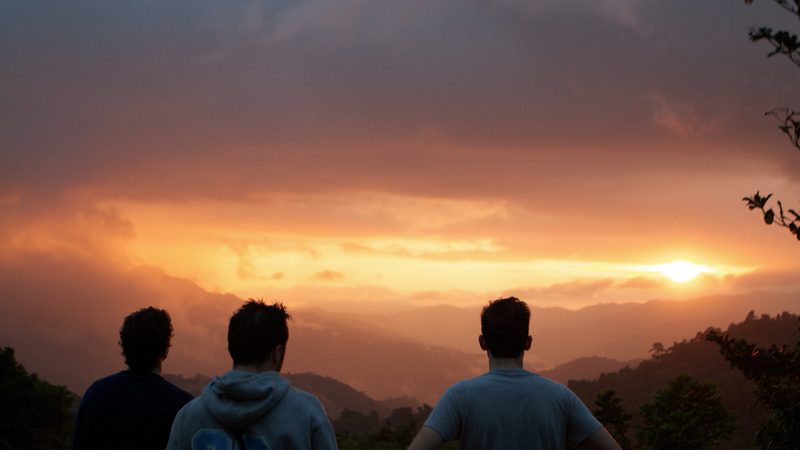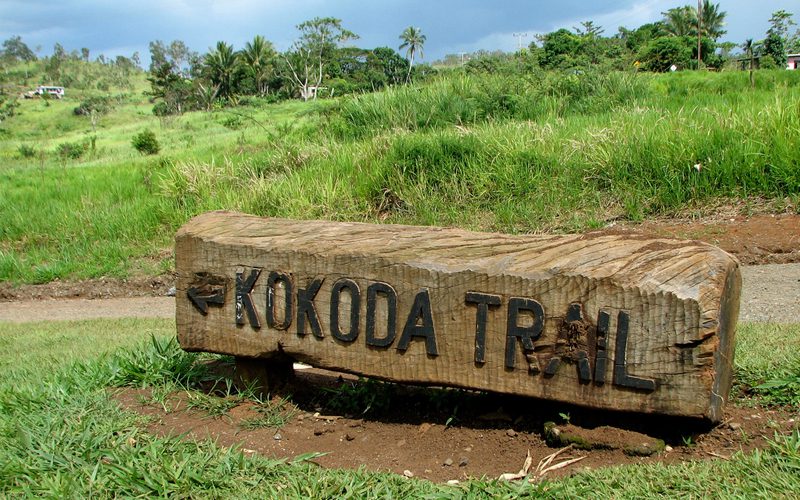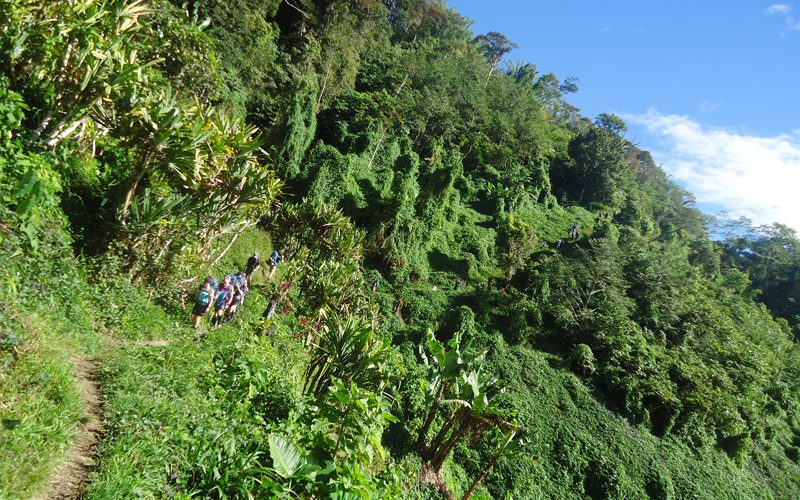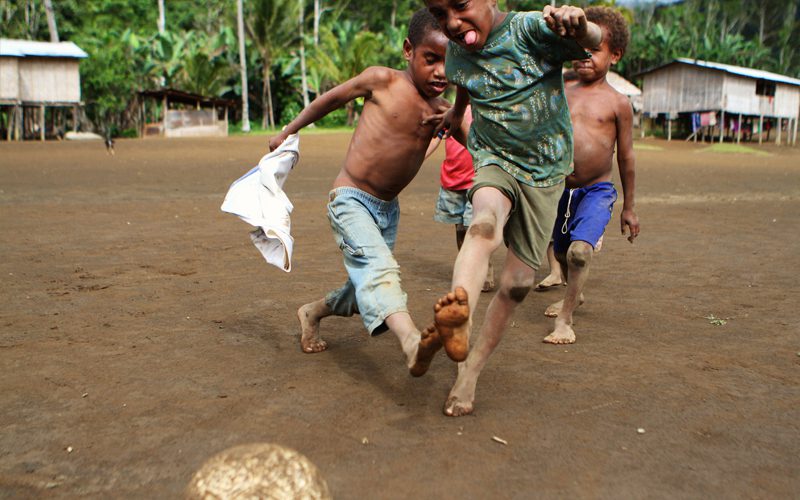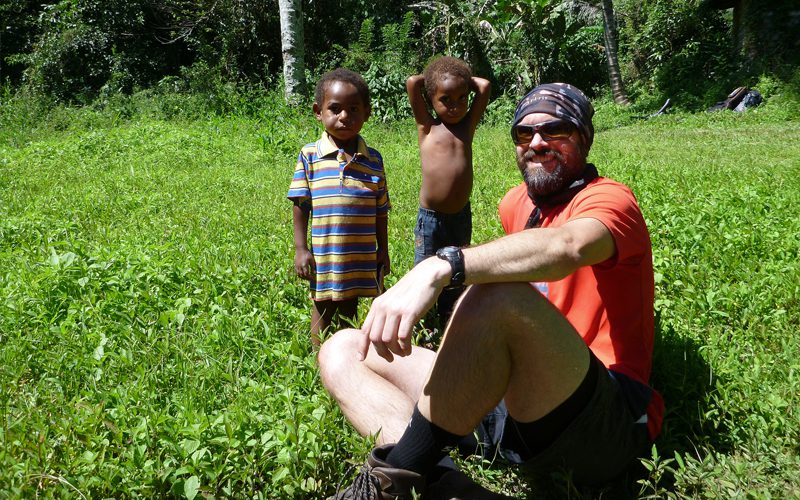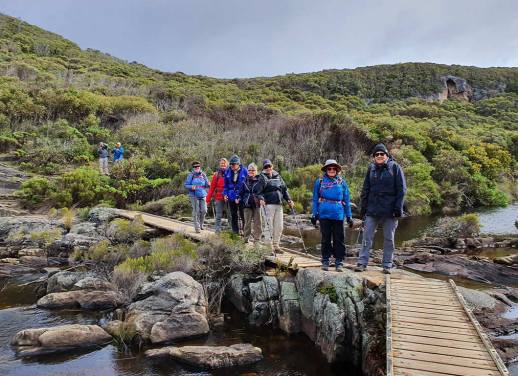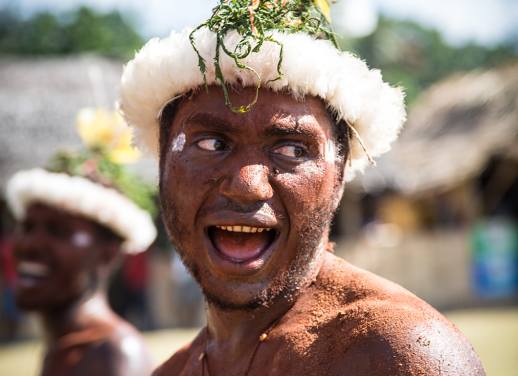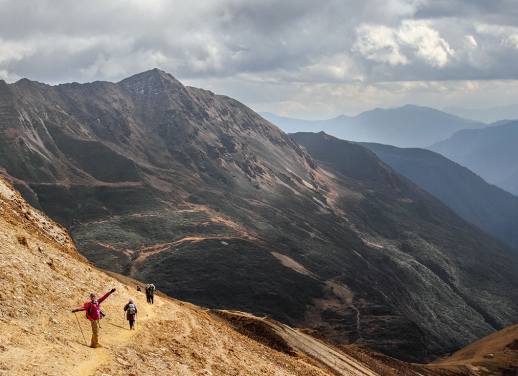In early January this year, two backpackers alleged they’d been attacked by a tribe of ‘cannibals’ on the Kokoda Track and barely escaped with their lives. Newspapers around the world dived on the story with the kind of gleeful frenzy that only happens when you’re allowed to put the words ‘cannibal tribe’ in a headline. Pictures of the couple were run next to stock images of Papua New Guinea villagers with captions like ‘Wild tribe…Papua New Guinea natives in traditional dress and spears’. Nope, no agenda there.
The thing is, the media frenzy over the case is doing serious damage to a fragile and much-needed tourism industry. Putting aside the fact that doubts have been raised about the alleged incident, and the fact that the lives of two young men now rest on the outcome, reporting like this doesn’t tell the whole story. Not even close.
We spoke to Genevieve Nelson of the Kokoda Track Foundation (an Australian aid organization dedicated to improving the lives of locals along the Track) about why Australians shouldn’t give up on Kokoda, and why the Track needs them now more than ever.
1. The track is as safe as it’s ever been
Over 20,000 Australians have hiked the Kokoda Track since it became popular shortly after 2001, the vast majority of them without incident. As Genevieve says, “The Track is not dangerous at all. It is a very difficult and challenging track physically, however locals will go out of their way to ensure that every trekker is safe.” All trekkers on the trail now need a permit from the Kokoda Track Authority, and must join a licensed guide or tour operator (of which Intrepid is one). The KTA always knows exactly who is on the track and roughly where they are at any one time.
2. Train correctly and you’ll be fine
Of the very rare incidents that have occurred on Kokoda, nearly all of them were due to poor training, or tackling the Track without a licensed guide. This is something strongly discouraged by the KTA. It just pays to be sensible: the Kokoda Track is known as a grueling (but rewarding) ordeal, so travellers should train accordingly. “It is 96km in length, but it is one of the toughest 96km treks anywhere in the world,” Genevieve says. “Any person intending to walk Kokoda but not only prepare physically and mentally for the challenge.”
3. There are no cannibal tribes
Although Papua New Guinea has a history of cannibalism among some of its literally hundreds of tribes, that’s just what it is, history. “People want the false claims made by the Sun newspaper to be countered,” Genevieve says, “Cannibals, wild dogs, poison ivy: there are no such things on Kokoda.” Frank Taylor, President of the Kokoda Tours Operators Association (and a 140-trek veteran of the Track) agreed that the description of ‘cannibals’ is wildly irresponsible: “The use of the loose descriptions of cannibals is considered degenerative,” he says. “It is ludicrous to write that kind of thing. Mainstream PNG people are a long-way removed from it.”
4. The locals are known for their warmth and hospitality
Ask anyone that’s walked the Kokoda Track and they’ll tell you about the incredible generosity, warmth and hospitality of the local Koiari and Orokaiva people who call this area home. They’re mostly subsistence farmers, living off the land. Their children attend village elementary school and spend their weekends kicking a footy near the village. These are the people you’ll stay with along the Track. The ones who will welcome you into their villages and their homes. You’ll share meals and swap jokes and kick the footy around. It’s a relationship, a legacy, that goes all the way back to the fabled Fuzzy Wuzzy Angles of WWII, and one that shouldn’t be undone for the sake of a sensational headline.
5. Those same locals rely on Kokoda Track tourism
The relationship between trekkers and the local villages is crucial to the survival of the Track. During the trekking season, many of the local men are employed as guides and porters by various companies, and during the wet season they return to their home villages and prepare gardens, build houses, care for their families. “Many communities along the Track benefit from the tourism industry,” Genevieve says. The men porter for Australian trek companies, which provides them and their families an income throughout the trekking season. A lot of villagers manage camp sites for trekkers to stay during the night too. These sites are owned by families or clans and profits are directed back into the community.”
6. It’s still one of the most amazing things you’ll ever accomplish
Australians who come back from Kokoda often come back changed. Along with Gallipoli, it’s one of the last links to a time in our country’s history that defined what it means to be Australian. “Kokoda is a once in a lifetime experience that we believe every Australia should experience,” Genevieve says. “The people and natural beauty of PNG and the Kokoda Track will stay with you for a very long time.” That’s what it’s all about: the people and the beauty. That’s why Kokoda will live on. Because the more people trek it, and talk about it, and share its story, the better it will be.
Make this the year you trek Kokoda. Intrepid runs a fully licensed adventure, with expert local trekking guides, so you know you’re in good hands.
Feature image c/o Alistair Kitchen, Flickr

